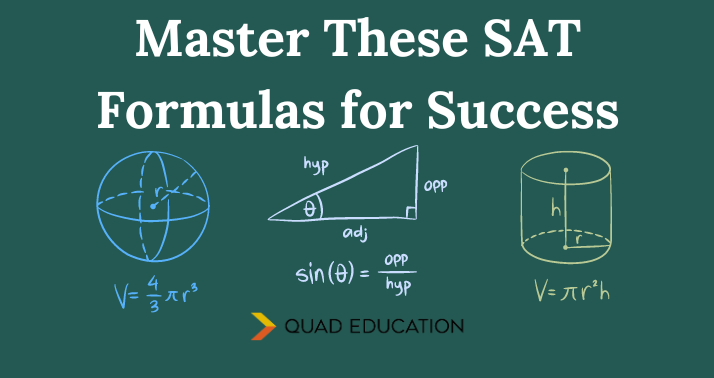When you’re tackling Algebra 2, having every formula you need for Algebra 2 right at your fingertips can make a big difference. This blog will help you find all the important formulas you need to understand and solve Algebra 2 problems with ease. Whether you’re studying for a test or working on homework, knowing these formulas will be a huge help!
In this guide, we’ll break down each formula in a way that’s easy to understand. We’ll also give you examples and tips to make learning Algebra 2 a lot less stressful. So, let’s dive in and make Algebra 2 simple and fun.
Every Formula The Basics
Algebra 2 can be tricky, but knowing the basics can help a lot. The most important formulas to start with are the ones for solving equations. These include the quadratic formula, which helps you find the roots of quadratic equations. It’s like a special tool that makes solving these types of problems easier.
Another basic formula is for linear equations, which help you understand straight lines on a graph. Learning how to use the slope-intercept form is crucial. It’s a simple way to describe a line’s steepness and position. With these basics, you’ll have a strong foundation to tackle more complex problems.
Don’t forget about the formulas for factoring polynomials. Factoring can help you break down complex expressions into simpler parts. This skill is important for solving polynomial equations and understanding their graphs. Mastering these basics will set you up for success in Algebra 2.
How to Use Algebra 2
Knowing how to use every formula you need for Algebra 2 is key to solving problems efficiently. For example, when working with quadratic equations, the quadratic formula is very useful. It helps you find the values of x that make the equation true. Practicing with different problems will make using this formula feel like second nature.
Similarly, understanding how to apply the slope-intercept form for linear equations is important. This formula tells you the slope of a line and where it crosses the y-axis. By practicing graphing lines using this formula, you’ll get better at visualizing and solving problems related to lines.
Using formulas for polynomials involves breaking down complex expressions. Techniques like factoring and expanding are essential. The more you practice these techniques, the easier it will be to handle polynomial equations and their applications.
Understanding Quadratic Equations with Formula
Quadratic equations are a big part of Algebra 2. To solve them, you can use the quadratic formula. This formula helps you find the values of x where the equation equals zero. It’s especially useful when the equation cannot be easily factored.
Another way to understand quadratic equations is by completing the square. This method turns a quadratic equation into a perfect square trinomial, making it easier to solve. Both methods are crucial for mastering quadratic equations and will help you handle a variety of problems.
Graphing quadratic equations is also important. The formula for the vertex of a parabola can show you where the highest or lowest point is. Understanding this helps you see how the graph of a quadratic equation behaves, which is key for solving many problems.
Mastering Exponential Functions: Every Formula You Need for Algebra 2

Exponential functions are another important part of Algebra 2. They involve equations where the variable is in the exponent. The formula for exponential growth and decay can help you model real-world situations like population growth or radioactive decay.
To work with exponential functions, you need to understand how to use the base and exponent correctly. This involves learning how to solve equations where the base is raised to a power. Practice with these formulas to become comfortable with how they work.
Graphing exponential functions is also useful. These graphs show how quantities change over time. By using the formulas for these graphs, you can predict future values and understand the behavior of exponential functions more clearly.
Every Formula You Need for Algebra 2: Graphing Made Easy
Graphing is a major part of Algebra 2, and using the right formulas can make it easier. For linear equations, you’ll use the slope-intercept form to graph straight lines. This formula tells you the line’s slope and where it crosses the y-axis, making graphing straightforward.
When it comes to quadratic functions, the vertex form is useful. It helps you graph parabolas by showing the vertex of the parabola directly. Understanding how to shift and scale the graph using this formula is key to getting accurate results.
For more complex functions, knowing how to use transformation formulas can help. These formulas let you move, stretch, or shrink graphs. Mastering these techniques will help you handle a variety of graphing problems in Algebra 2.
Simplifying Polynomials: Every Formula You Need for Algebra 2
Simplifying polynomials is an important skill in Algebra 2. The process involves combining like terms and using distributive properties. The distributive property helps you multiply terms and simplify expressions.
Factoring polynomials is another crucial technique. By breaking down polynomials into simpler factors, you make solving equations easier. Learning how to factor different types of polynomials will help you handle more complex problems.
Expanding polynomials is also useful. This involves multiplying out the terms of polynomials to get a simplified expression. Mastering this technique will make it easier to work with polynomials in various Algebra 2 problems.
Conclusion
Now you have a handy guide to every formula you need for Algebra 2! With all these formulas, you’re ready to tackle your Algebra 2 problems with confidence. Remember, practicing these formulas will help you get better and make learning Algebra 2 more fun. The more you use them, the easier they will become.
Keep this guide close as you study and solve problems. Don’t worry if you don’t get everything right away—practice makes perfect! Soon, you’ll be a pro at Algebra 2, and all these formulas will feel like old friends. Keep up the great work, and have fun with your math journey,


